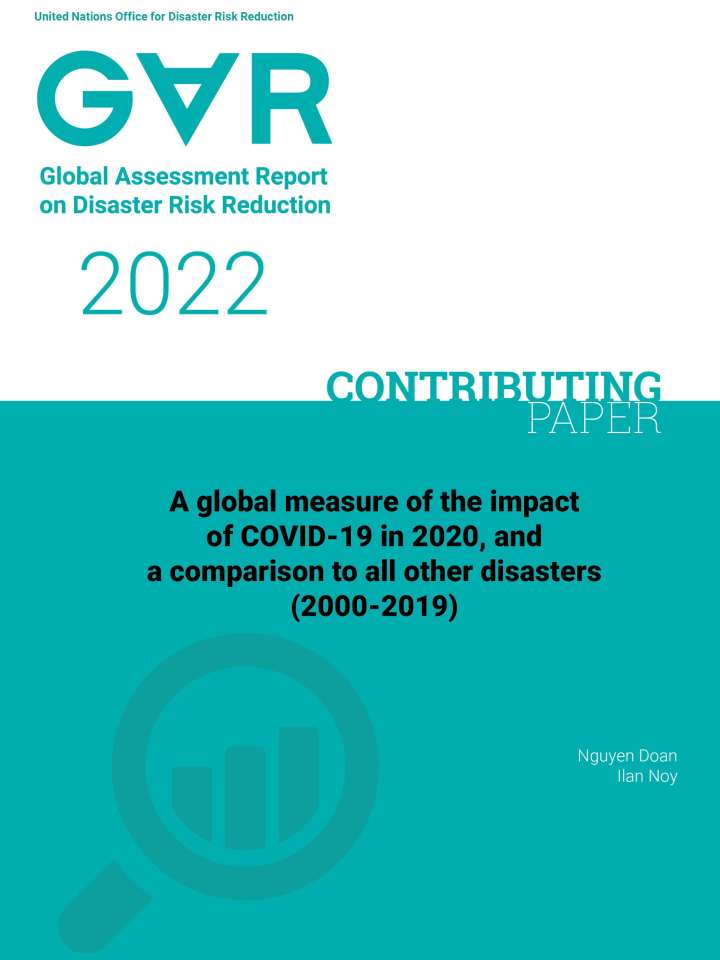A global measure of the impact of COVID-19 in 2020, and a comparison to all other disasters (2000-2019)
This contributing paper explores the use of a Lifeyears Index to assess the cost of the COVID-19 pandemic across countries and compare these costs to the costs of all other disasters that have occurred in all countries in the past 20 years. Typically, disaster damages are measured separately in four dimensions: fatalities, injuries, dislocations, and the financial damage that they wreak. Noy (2014) developed, for GAR 2015, a Lifeyears Index of disaster damage which aggregates these disparate measures. This is in contrast to the usual approach of attaching a dollar value to mortality and morbidity, which may prove very difficult to use in making comparisons across countries.
This study finds that the costs of the pandemic, measured for 2020, far outweigh the annual costs associated with other disasters and/or the summed cost associated to all epidemics combined in the past two decades. It is the economic loss that dominates this impact. The human and social implications of this economic loss are plausibly much greater than the direct toll in mortality and morbidity in almost all countries. Finally, it is small countries like the Maldives and Guyana that have experienced the most dramatic and painful crisis, largely under the radar of the world’s attention. The paper concludes from these findings is not that governments’ policy reactions were unwarranted. If anything, it finds that the loss of Lifeyears is correlated positively across the three dimensions we examine. Countries that experienced a deeper health crisis also experienced a deeper economic one.
